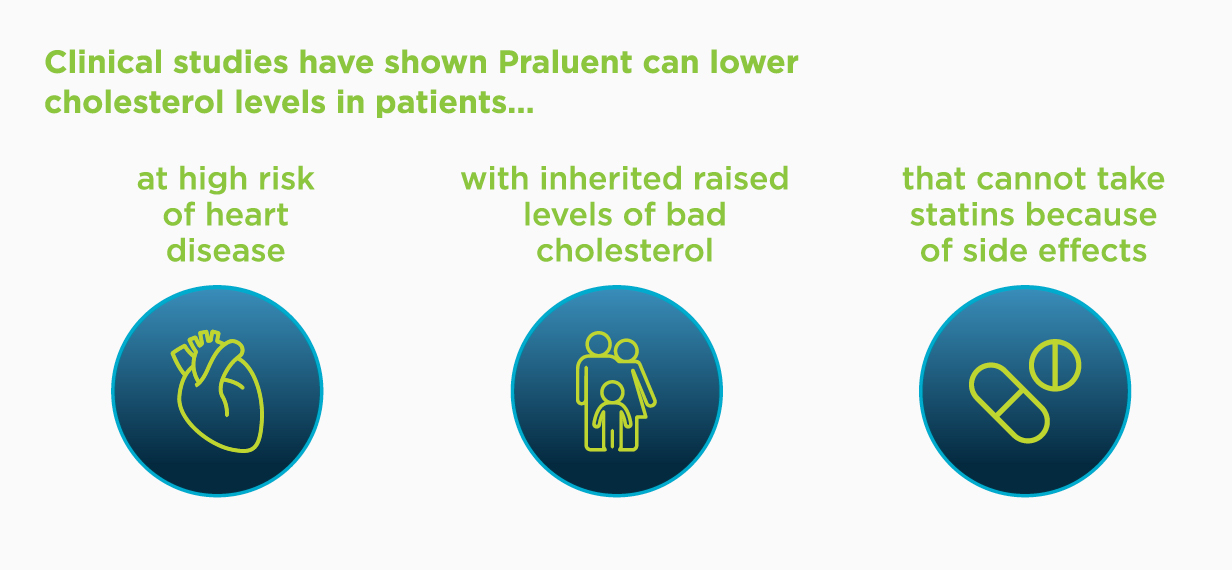Praluent works by helping to remove low-density lipoprotein cholesterol (LDL-C; often referred to as ‘bad’ cholesterol) from the body. High levels of bad cholesterol can lead to health problems like heart disease (including heart attacks) and strokes. Praluent may have been prescribed by your healthcare professional in conjunction with other cholesterol-lowering medicines.
Having raised cholesterol levels is usually asymptomatic, meaning that there are no physical symptoms. Even if you don’t feel any different, Praluent will be working to help lower your levels of bad cholesterol. It is important to keep using Praluent as prescribed by your doctor even if you feel well.
Praluent is given as an injection just under the skin, by a pen already filled with the medicine, usually every two weeks or four weeks depending on dose. 98% of patients agreed that the 75/150 mg Praluent pen was easy to use.1
Figure 1 - Praluent can lower cholesterol1

Why have I been prescribed Praluent?
- You may have already tried other medicines, such as statins, to help lower your levels of cholesterol
- In many people with coronary heart disease, statins on their own may not be enough to get cholesterol down to healthy levels2
- Some people are not able to take statins because of side-effects3
Is Praluent a statin?
No, Praluent works in a different way to statins. For patients in whom statins are insufficient, Praluent may help.
References
- Roth EM, et al. Patient and Physician Perspectives on Mode of Administration of the PCSK9 Monoclonal Antibody Alirocumab, an Injectable Medication to Lower LDL-C Levels: Clin Ther 2015.
- Jones P.H, Nair R, & Thakker K.M, Prevalence of dyslipidemia and lipid goal attainment in statin-treated subjects from 3 data sources: a retrospective analysis. J Am Heart Assoc 2012;1(6):e001800.
- Arca M. & Pigna G, Treating statin-intolerant patients. Diabetes Metab Syndr Obes 2011;4:155–66.
Previous
What is Cholesterol?Next
Using Praluent




